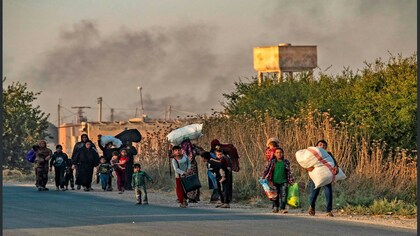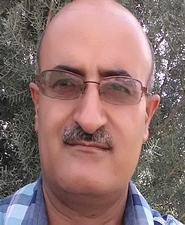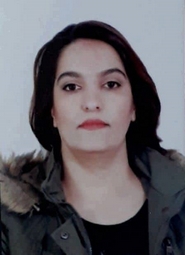The terrorist organization behind the power of the mullahs
12:19 - 24 May 2012

By SARA AKRAMI AND SAEED GHASSEMINEJAD
22/05/2012
In recent years, especially under the gov\'t of Mahmoud Ahmadinejad, the IRGC has taken over many aspect of Iranian society.
The establishment of the Islamic Republic of Iran in 1979 was the beginning of horror not only for Iranian citizens, but also for the process of peacemaking in the Middle East and the world.
After Ayatollah Khomeini, the founder of the Islamic Republic of Iran, took power and put in place Islamic laws throughout the country, he formed an opprobrious organization called the “Iranian Revolutionary Guard Corps.”
Aside from its primary goal, namely the protection of the Islamic system of Iran, the IRGC’s duty is to prevent uprisings or internal dissident. The IRGC consist of four distinct parts: Paramilitary Brigades; The Basij Militia, a paramilitary police force of 90,000; The Quds Force, a terrorist element; and the Ansar al Mahdi Force, a bodyguard for the senior members of the government and for the nuclear program.
In addition, the IRGC is linked to terrorist activities around the world, and supports terrorist organizations.
Like the Russian KGB or the SS of Nazi Germany, the IRGC are both the agents of order for a harsh ideological regime and its agents of oppression.
In recent years, especially under the government of the inhumane and Holocaust-denying President Mahmoud Ahmadinejad, the IRGC has taken over many aspect of Iranian society; it has influence in the political, social, military and especially economic systems. The organization has turned into a business empire in Iran and is known as one of the wealthiest organizations after the National Iranian Oil Company.
During the early years of the Islamic Republic, the IRGC functioned more like an intelligence service and militia organizer. It was a vital organization for Khomeini, required to suppress his opponents. Later, Khomeini realized that the members of the IRGC were more interested in being involved in Iran’s politics than in defending the Islamic government.
Consequently, he prevented members from participation in politics by sending them to the front lines of the Iran-Iraq War. During the war, the IRGC received great support, including vast sums of money and supplies, from the regime’s clerics. During these years, Rafsanjani (the former president of the regime) who was appointed as the commander-in-chief of the war effort by Khomeini, developed close ties with the IRGC.
It was after Khomeini’s death that the organization became increasingly involved in Iran’s politics and, to an ever-greater degree, economy. When Rafsanjani’s presidency ended and Khatami, a former president of the regime who had promised reforms, came to power, the IRGC became one of the main players in the country’s economy.
One of the most significant actions of the IRGC was to bring an unknown political figure, Mahmoud Ahmadinejad, to power. Today it plays a key role in important sectors of Iran’s economy, such as oil, gas and other profitable industries. In addition, the IRGC has a great impact on Iran’s foreign relations, and by its presence in Iraq, Afghanistan, Lebanon and Palestine (West Bank and Gaza) promotes various difficulties and creates obstacles for the process of peacemaking in the Middle East.
When it comes to terrorist activities, the IRGC is training terrorists in Lebanon and Yemen; sending paramilitary forces to shore up Syria, fighting alongside Hezbollah, or protecting drug smuggling operations in Latin America. Its Quds Force has worked with many terrorist groups (including liaising with al-Qaida), delivered terrorist attacks on its own and has murdered many Iranian dissidents and exiles around the world.
Some of the significant terrorist activities of the IRGC include the 1983 United States Embassy bombing in Beirut, the 1988 Kuwait Airlines hijacking, the 1992 Israel Embassy attack in Buenos Aires, and most significantly, the explosion of the Argentine Israelite Mutual Association in Buenos Aires on July 18, 1994.
In addition, the IRGC played an important role during the 2006 Lebanon War and was responsible for firing missiles at Israeli naval vessels.
It further assisted Hezbollah to fire rockets into Israel across the Syrian border.
CANADA IS among the countries that have so far not considered the IRGC to be a terrorist organization. However, Canada has many reasons to put the IRGC on its terrorist list.
1. Canada has evidence that Zahra Kazemi, the Iranian-Canadian photojournalist, was raped and tortured before her 2003 beating death in a Tehran prison. Iran has always refused to release her corpse so an autopsy could be conducted. The IRGC runs Iran’s prisons.
2. Iran supplied weapons and explosives to the Taliban in southwestern Afghanistan, apparently since 2003.
Iranian-supplied material, under the auspices of the IRCG, has probably killed some Canadian soldiers.
3. Hezbollah has used Canada as a base for fundraising and specialist equipment, and their actions directly contributed to the death of a Canadian soldier with the UN in South Lebanon in 2006.
4. Iran has made enough noise about having nuclear weapons for any sober observer to conclude that once they have a working bomb, they will use it. This is a direct threat to many of our citizens living and working abroad, and an indirect threat to us.
5. On November 28, 2011, US District Court Judge John D. Bates handed down a ruling that showed Iran had been responsible for providing material support to al Qaida for the 1998 East African Embassy bombings.
Moreover, Judge Bates’ decision pointed out that Iran had agreed to provide training at Hezbollah camps for al Qaida as early as 1992. Again, Iran would have operated through the IRGC. Al Qaida attacks have killed Canadian citizens and caused massive economic harm to Canada, which is why it is listed as a terrorist entity.
6. Since the overthrow of Saddam Hussein, Iran has done its utmost to keep Iraq unstable by pumping in arms and support to different groups.
Again, the Quds force of the IRGC has been implicated in much of this activity.
7. Using the Quds force and IRGC, Iran has stirred up the Shi’ite Houthi tribesmen in Yemen and got them to stage attacks into Saudi Arabia in 2010 and 2011.
8. Members of the IRGC have been used to assassinate many Iranian exiles and dissidents since 1979 in many countries and recently were arrested in the United States for a planned assassination of the Saudi ambassador to the United States.
Finally, although the IRGC plays a key role in the protection of the Islamic Republic of Iran and suppression of Iranian citizens, it also extends the existence of a government that has taken the lives of many innocent individuals through its terrorist activities and brutal actions.
Therefore, we suggest that the IRGC should be named a terrorist organization by the Canadian government and other countries of the world that have so far not done so. In addition, its commanders and, more importantly, all the companies that are owned by the IRGC and their financial managers should be put on the sanction list.
.Sara Akrami is a Kurdish student activist and Saeed Ghassemnejad is an Iranian student activist in Canada.
This article first appeared on The Jerusalem Post
Photo by: REUTERS
22/05/2012
In recent years, especially under the gov\'t of Mahmoud Ahmadinejad, the IRGC has taken over many aspect of Iranian society.
The establishment of the Islamic Republic of Iran in 1979 was the beginning of horror not only for Iranian citizens, but also for the process of peacemaking in the Middle East and the world.
After Ayatollah Khomeini, the founder of the Islamic Republic of Iran, took power and put in place Islamic laws throughout the country, he formed an opprobrious organization called the “Iranian Revolutionary Guard Corps.”
Aside from its primary goal, namely the protection of the Islamic system of Iran, the IRGC’s duty is to prevent uprisings or internal dissident. The IRGC consist of four distinct parts: Paramilitary Brigades; The Basij Militia, a paramilitary police force of 90,000; The Quds Force, a terrorist element; and the Ansar al Mahdi Force, a bodyguard for the senior members of the government and for the nuclear program.
In addition, the IRGC is linked to terrorist activities around the world, and supports terrorist organizations.
Like the Russian KGB or the SS of Nazi Germany, the IRGC are both the agents of order for a harsh ideological regime and its agents of oppression.
In recent years, especially under the government of the inhumane and Holocaust-denying President Mahmoud Ahmadinejad, the IRGC has taken over many aspect of Iranian society; it has influence in the political, social, military and especially economic systems. The organization has turned into a business empire in Iran and is known as one of the wealthiest organizations after the National Iranian Oil Company.
During the early years of the Islamic Republic, the IRGC functioned more like an intelligence service and militia organizer. It was a vital organization for Khomeini, required to suppress his opponents. Later, Khomeini realized that the members of the IRGC were more interested in being involved in Iran’s politics than in defending the Islamic government.
Consequently, he prevented members from participation in politics by sending them to the front lines of the Iran-Iraq War. During the war, the IRGC received great support, including vast sums of money and supplies, from the regime’s clerics. During these years, Rafsanjani (the former president of the regime) who was appointed as the commander-in-chief of the war effort by Khomeini, developed close ties with the IRGC.
It was after Khomeini’s death that the organization became increasingly involved in Iran’s politics and, to an ever-greater degree, economy. When Rafsanjani’s presidency ended and Khatami, a former president of the regime who had promised reforms, came to power, the IRGC became one of the main players in the country’s economy.
One of the most significant actions of the IRGC was to bring an unknown political figure, Mahmoud Ahmadinejad, to power. Today it plays a key role in important sectors of Iran’s economy, such as oil, gas and other profitable industries. In addition, the IRGC has a great impact on Iran’s foreign relations, and by its presence in Iraq, Afghanistan, Lebanon and Palestine (West Bank and Gaza) promotes various difficulties and creates obstacles for the process of peacemaking in the Middle East.
When it comes to terrorist activities, the IRGC is training terrorists in Lebanon and Yemen; sending paramilitary forces to shore up Syria, fighting alongside Hezbollah, or protecting drug smuggling operations in Latin America. Its Quds Force has worked with many terrorist groups (including liaising with al-Qaida), delivered terrorist attacks on its own and has murdered many Iranian dissidents and exiles around the world.
Some of the significant terrorist activities of the IRGC include the 1983 United States Embassy bombing in Beirut, the 1988 Kuwait Airlines hijacking, the 1992 Israel Embassy attack in Buenos Aires, and most significantly, the explosion of the Argentine Israelite Mutual Association in Buenos Aires on July 18, 1994.
In addition, the IRGC played an important role during the 2006 Lebanon War and was responsible for firing missiles at Israeli naval vessels.
It further assisted Hezbollah to fire rockets into Israel across the Syrian border.
CANADA IS among the countries that have so far not considered the IRGC to be a terrorist organization. However, Canada has many reasons to put the IRGC on its terrorist list.
1. Canada has evidence that Zahra Kazemi, the Iranian-Canadian photojournalist, was raped and tortured before her 2003 beating death in a Tehran prison. Iran has always refused to release her corpse so an autopsy could be conducted. The IRGC runs Iran’s prisons.
2. Iran supplied weapons and explosives to the Taliban in southwestern Afghanistan, apparently since 2003.
Iranian-supplied material, under the auspices of the IRCG, has probably killed some Canadian soldiers.
3. Hezbollah has used Canada as a base for fundraising and specialist equipment, and their actions directly contributed to the death of a Canadian soldier with the UN in South Lebanon in 2006.
4. Iran has made enough noise about having nuclear weapons for any sober observer to conclude that once they have a working bomb, they will use it. This is a direct threat to many of our citizens living and working abroad, and an indirect threat to us.
5. On November 28, 2011, US District Court Judge John D. Bates handed down a ruling that showed Iran had been responsible for providing material support to al Qaida for the 1998 East African Embassy bombings.
Moreover, Judge Bates’ decision pointed out that Iran had agreed to provide training at Hezbollah camps for al Qaida as early as 1992. Again, Iran would have operated through the IRGC. Al Qaida attacks have killed Canadian citizens and caused massive economic harm to Canada, which is why it is listed as a terrorist entity.
6. Since the overthrow of Saddam Hussein, Iran has done its utmost to keep Iraq unstable by pumping in arms and support to different groups.
Again, the Quds force of the IRGC has been implicated in much of this activity.
7. Using the Quds force and IRGC, Iran has stirred up the Shi’ite Houthi tribesmen in Yemen and got them to stage attacks into Saudi Arabia in 2010 and 2011.
8. Members of the IRGC have been used to assassinate many Iranian exiles and dissidents since 1979 in many countries and recently were arrested in the United States for a planned assassination of the Saudi ambassador to the United States.
Finally, although the IRGC plays a key role in the protection of the Islamic Republic of Iran and suppression of Iranian citizens, it also extends the existence of a government that has taken the lives of many innocent individuals through its terrorist activities and brutal actions.
Therefore, we suggest that the IRGC should be named a terrorist organization by the Canadian government and other countries of the world that have so far not done so. In addition, its commanders and, more importantly, all the companies that are owned by the IRGC and their financial managers should be put on the sanction list.
.Sara Akrami is a Kurdish student activist and Saeed Ghassemnejad is an Iranian student activist in Canada.
This article first appeared on The Jerusalem Post
Photo by: REUTERS



